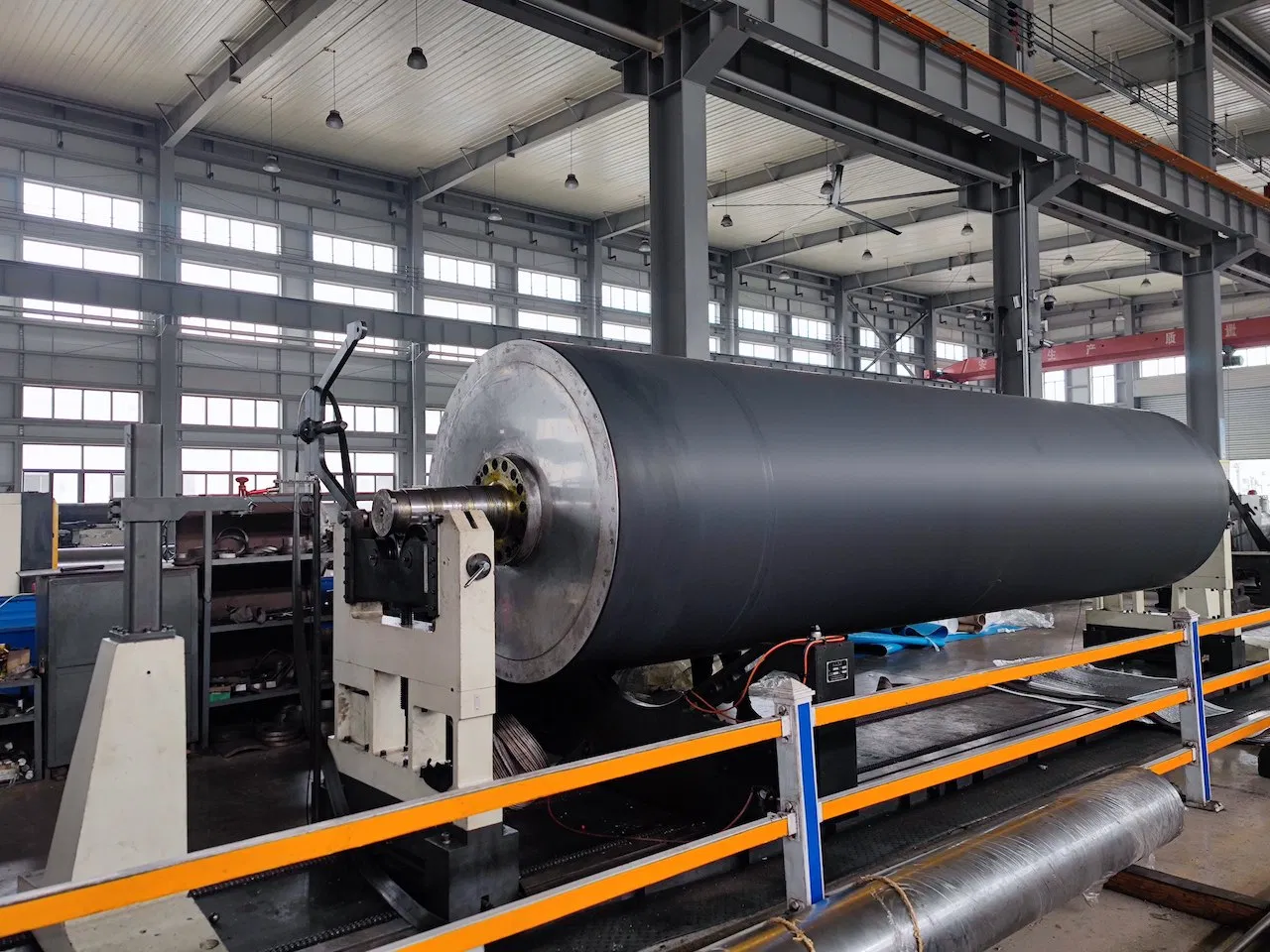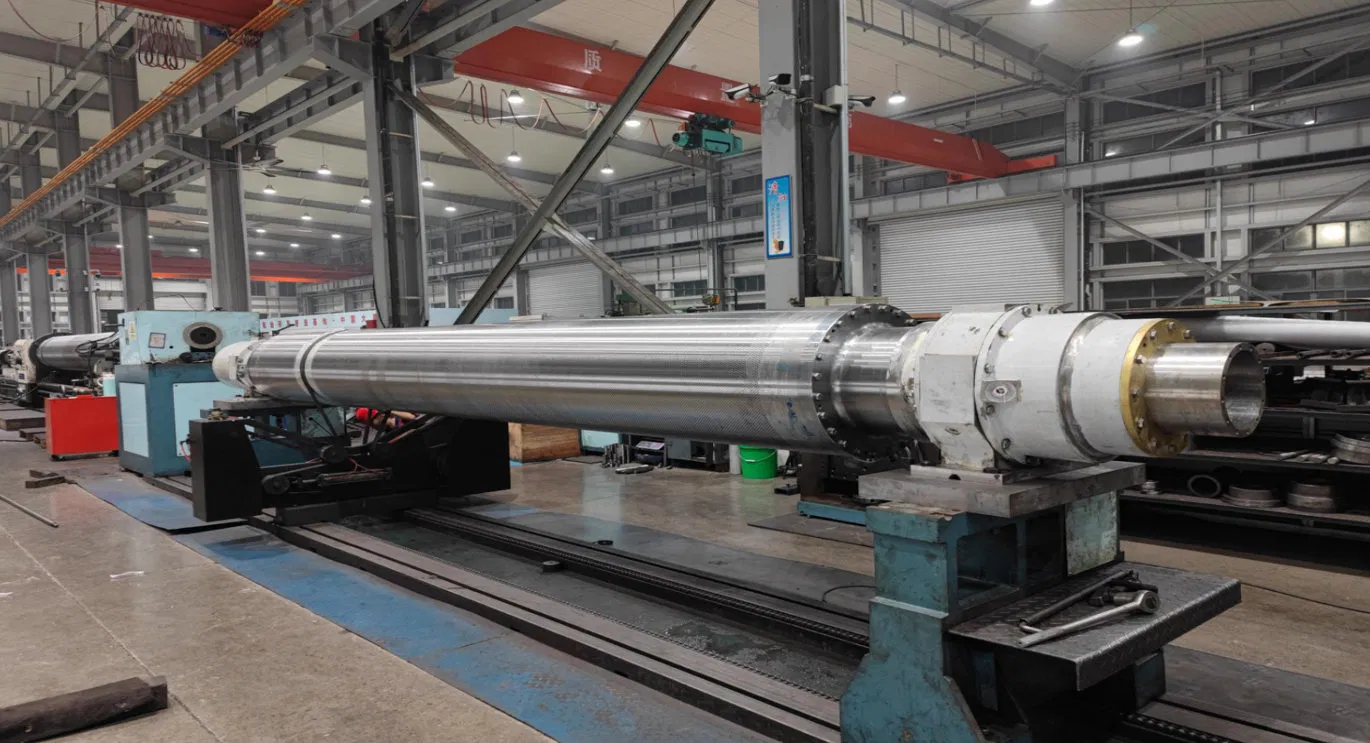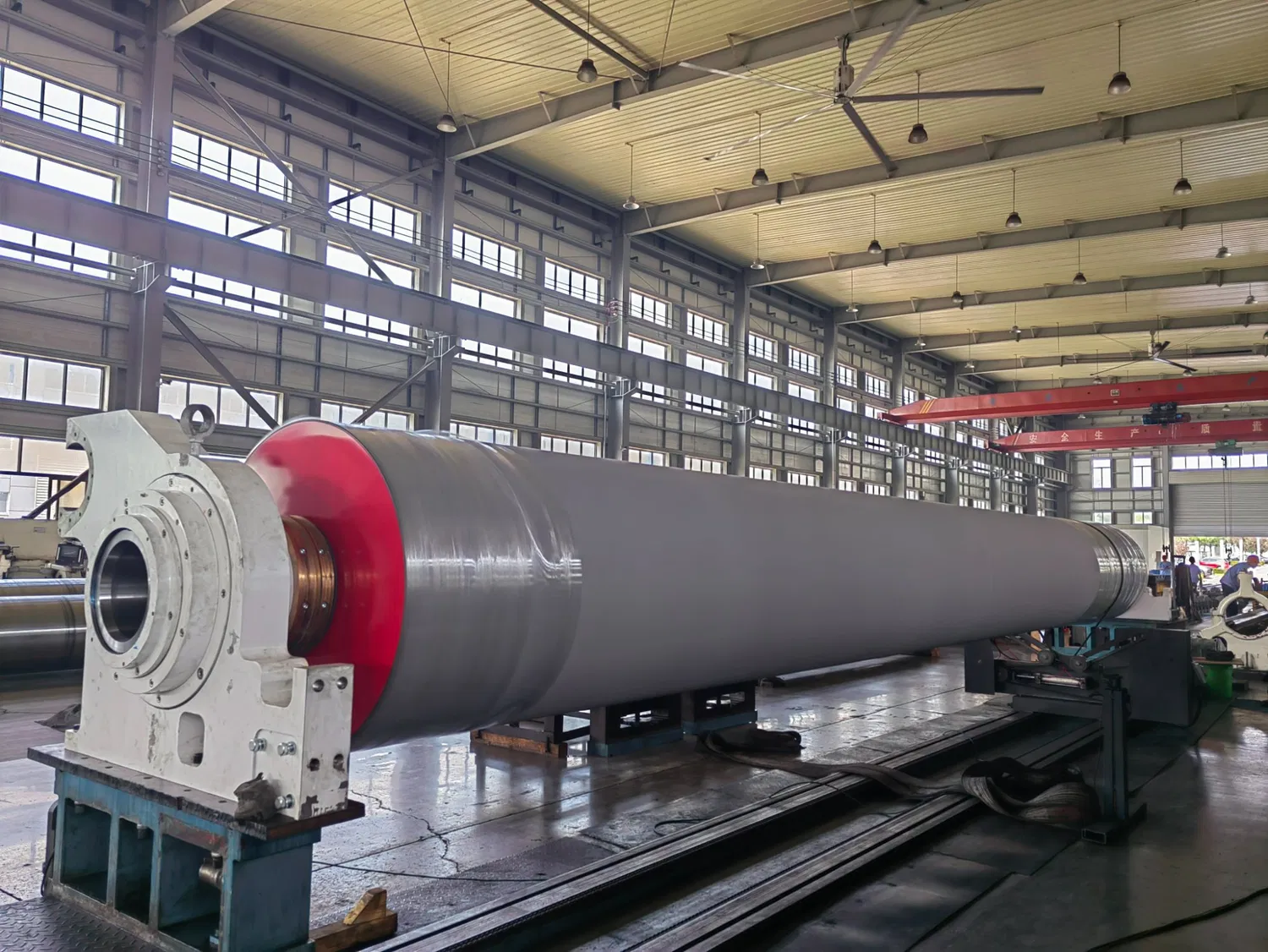Have you ever stopped to consider the intricate machinery that transforms wood pulp into the paper we use every single day? It’s a fascinating process, and at its very heart lie components that are often overlooked yet absolutely indispensable: the paper mill rolls. Frankly speaking, without these robust, precisely engineered cylinders, modern paper production as we know it simply wouldn't exist. They are the silent workhorses, guiding, pressing, drying, and smoothing the paper web through every stage of its journey from slurry to finished sheet.
To be honest, the complexity and sheer scale of a paper machine are astounding, and the rolls within it are subjected to immense pressures, high temperatures, and constant friction. Understanding their function, design, and maintenance is key to appreciating the efficiency and quality of today's paper products. This article will take a comprehensive look at these vital components, shedding light on their crucial role, diverse types, the precision engineering behind them, and the meticulous care required to keep them running smoothly.
The Crucial Role of Paper Mill Rolls in Production
In the grand scheme of papermaking, paper mill rolls are far more than just cylindrical objects; they are the backbone of the entire process. From the moment the dilute fiber slurry enters the machine, rolls begin their tireless work. They are instrumental in dewatering the pulp, consolidating the paper web, and imparting the desired surface properties.
The journey of paper through a mill is typically divided into several distinct sections, and each section relies heavily on specialized rolls:
- Forming Section: Here, the initial dewatering occurs. Rolls, often called forming rolls or couch rolls, help create a uniform fiber mat from the dilute suspension. They facilitate the removal of water through gravity and suction, laying the foundation for the paper sheet.
- Press Section: This is where mechanical dewatering takes center stage. Massive press rolls, often weighing many tons, squeeze out a significant amount of water from the nascent paper web. This process not only reduces the energy required for subsequent drying but also improves the sheet's density and strength. Different configurations of press rolls, such as plain, grooved, or blind-drilled, are designed to optimize water removal and prevent rewetting.
- Dryer Section: Once pressed, the paper still contains a considerable amount of moisture. Dryer rolls, heated internally by steam, evaporate the remaining water. These rolls, often arranged in large, multi-cylinder sections, ensure the paper reaches its final moisture content, preventing warping and ensuring stability.
- Calender Section: For many paper grades, a smooth, uniform surface is essential. Calender rolls, often made of highly polished chilled cast iron, are used to compress and smooth the paper web, enhancing its gloss, thickness, and printability. The pressure and temperature applied by these rolls are precisely controlled to achieve specific surface characteristics.
- Reel Section: Finally, the finished paper is wound onto large reel spools, which are essentially specialized rolls designed for winding and unwinding the continuous paper web.
Many experts agree that the performance of these rolls directly impacts the quality, efficiency, and cost-effectiveness of the entire papermaking operation. Any deviation in their performance can lead to defects, downtime, and significant financial losses.
Anatomy and Types of Paper Mill Rolls
The world of paper mill rolls is incredibly diverse, with each type meticulously designed for a specific function within the paper machine. While they all share the fundamental cylindrical shape, their internal construction, surface materials, and operational characteristics vary widely. Understanding these distinctions is crucial for anyone involved in the pulp and paper industry.
Let's delve into the primary types of paper machine rollers and their unique attributes:
- Couch Rolls: Found at the end of the forming section, these large-diameter rolls are typically perforated and often equipped with vacuum boxes. Their primary role is to consolidate the wet web and remove water through suction, transferring the sheet from the forming wire to the press section.
-
Press Rolls: These are arguably the most critical for dewatering. They come in various forms:
- Plain Press Rolls: Solid rolls that apply pressure to squeeze water out.
- Grooved Press Rolls: Feature circumferential grooves on their surface to provide channels for water removal, preventing hydraulic pressure buildup.
- Blind-Drilled Press Rolls: Have a pattern of blind holes on their surface, which act as miniature reservoirs for water, improving dewatering efficiency.
- Suction Press Rolls: Similar to couch rolls, these have internal vacuum chambers and a perforated shell to actively draw water away from the sheet.
- Dryer Rolls (or Dryer Cylinders): These are large, hollow cast iron or steel cylinders, internally heated by steam. They are designed to transfer heat efficiently to the paper web, evaporating the remaining moisture. Their surfaces are typically smooth and highly polished to ensure even drying and prevent sticking.
- Calender Rolls: Used in the calender stack, these rolls are designed to impart smoothness, gloss, and uniform thickness to the paper. They are often made of chilled cast iron, which offers exceptional hardness and a mirror-like finish. Soft calender rolls, which combine a hard roll with a softer, polymer-covered roll, are also common for specific paper grades.
- Guide Rolls and Spreader Rolls: These rolls are not directly involved in the paper formation or dewatering but play a crucial role in guiding the paper web smoothly through the machine, preventing wrinkles, and maintaining tension.
- Reel Spools and Winder Rolls: These are specialized rolls used at the end of the machine to wind the finished paper into large parent rolls, and then to slit and rewind these into smaller, customer-specific rolls.
Coatings and Coverings: Enhancing Performance
The core material of a roll (often cast iron or steel) provides structural integrity, but it's the surface coating that truly defines its performance characteristics. Interestingly enough, advancements in materials science have revolutionized roll coverings, allowing for tailored properties to meet specific operational demands.
Common coatings and coverings include:
- Rubber Covers: Traditional and versatile, rubber covers provide elasticity, good grip, and can be formulated for various hardnesses and chemical resistances. They are extensively used on press rolls, guide rolls, and sometimes even couch rolls.
- Polymer and Composite Covers: Modern synthetic polymers and composite materials offer superior wear resistance, chemical resistance, and release properties compared to traditional rubber. They can withstand higher temperatures and pressures, making them ideal for high-speed machines and demanding applications.
- Ceramic Coatings: Applied to rolls requiring extreme hardness, wear resistance, and anti-corrosion properties, such as some calender rolls or rolls in harsh chemical environments. These coatings often provide an exceptionally smooth, durable surface.
- Metallic Coatings: Chrome plating or other metallic overlays can be used to enhance surface hardness and corrosion resistance, particularly for dryer rolls or certain calender rolls.
The choice of coating significantly impacts the roll's lifespan, the paper's quality, and the overall efficiency of the machine. I've found that selecting the right cover for the right application is a critical decision that can dramatically affect operational costs and product output.
Engineering Precision: Design and Manufacturing of Paper Mill Rolls
The environment inside a paper machine is incredibly demanding. Rolls must withstand constant high speeds, immense nip pressures, fluctuating temperatures, and corrosive chemicals. This necessitates an extraordinary level of engineering precision in the design and manufacturing of paper mill rolls. Frankly speaking, any slight imbalance or imperfection can lead to vibrations, uneven paper profiles, and ultimately, catastrophic machine failure.
The manufacturing process for these colossal components is a testament to modern industrial capabilities. It typically involves several meticulous stages:
- Material Selection: Depending on the roll's function, materials like high-grade cast iron (for dryer and calender rolls), forged steel (for press roll cores), or specialized composite materials are chosen for their strength, thermal stability, and machinability.
- Casting or Forging: Large rolls often begin as massive castings or forgings. This initial step requires careful control of metallurgy to ensure uniform grain structure and freedom from defects.
- Rough Machining: Once the basic form is achieved, the roll undergoes rough machining on large lathes. This removes excess material and brings the roll close to its final dimensions.
- Stress Relieving: To prevent warping or cracking during subsequent operations or in service, rolls are often subjected to heat treatment processes to relieve internal stresses.
- Precision Machining and Grinding: This is where the true artistry of roll manufacturing comes into play. Rolls are machined to extremely tight tolerances for concentricity, parallelism, and diameter. The surface is then meticulously ground to achieve the required smoothness and profile. This often involves cambering – grinding the roll with a slight curvature – to compensate for deflection under load, ensuring uniform pressure across the paper web.
- Dynamic Balancing: Given the high rotational speeds, dynamic balancing is absolutely critical. Rolls are spun on specialized balancing machines to detect and correct any imbalances, which could otherwise lead to severe vibrations, bearing damage, and poor paper quality. Many experts agree that a perfectly balanced roll is key to maximizing machine speed and minimizing wear.
- Covering and Finishing: If the roll requires a rubber, polymer, or composite cover, this is applied after machining and often followed by further grinding and polishing of the cover itself to achieve the desired surface finish and profile.
The precision involved in these steps ensures that each roll performs its specific task with unwavering accuracy, contributing to the overall efficiency and quality of the paper produced. It's worth noting that even microscopic deviations can have macroscopic impacts on the final product.

The Lifeline of Production: Maintenance and Optimization of Paper Mill Rolls
Given their critical role and the harsh conditions they operate under, the maintenance of paper machine rolls is not just important; it's absolutely vital. Proper maintenance directly translates to increased uptime, consistent paper quality, and extended equipment lifespan. Neglecting roll maintenance can lead to costly downtime, production losses, and compromised product quality. In my experience, proactive maintenance is always more cost-effective than reactive repairs.
Common issues that necessitate roll maintenance include:
- Wear and Tear: Abrasive forces from the paper web, felts, and other components cause the roll surface to wear down, altering its profile and surface finish.
- Corrosion: Chemicals used in the papermaking process can corrode metallic roll surfaces or degrade polymer covers.
- Cracking: Thermal stresses, fatigue, or impact can lead to cracks in the roll body or cover.
- Surface Damage: Nicks, grooves, or buildup of contaminants on the roll surface can directly impact paper quality, causing streaks, holes, or uneven profiles.
- Bearing Issues: Worn or damaged bearings can lead to excessive vibration, heat generation, and eventual roll failure.
To combat these issues, a comprehensive roll maintenance program typically includes:
- Regular Inspection: Visual checks, temperature monitoring, and vibration analysis are routine. Non-Destructive Testing (NDT) methods like ultrasonic testing or eddy current testing are used to detect internal flaws or cracks that are not visible on the surface.
- Grinding and Resurfacing: When a roll surface wears unevenly or develops imperfections, it is removed from the machine and sent to a specialized roll grinding facility. Here, precision grinders restore the roll's original profile, concentricity, and surface finish. This often involves re-cambering to ensure optimal nip pressure.
- Re-covering: For rolls with rubber or polymer covers, the old cover is stripped off, and a new one is applied and then ground to specification. This process extends the life of the roll core.
- Balancing: After grinding or re-covering, rolls are re-balanced dynamically to ensure smooth operation at high speeds.
- Bearing Replacement and Lubrication: Regular inspection and replacement of bearings are crucial to prevent catastrophic failures. Proper lubrication schedules are also paramount.
- Cleaning: Regular cleaning of roll surfaces, especially in the press and dryer sections, prevents buildup that can affect paper quality and heat transfer.
Optimizing paper production with rolls also involves continuous monitoring and data analysis. By tracking roll performance metrics, mills can predict potential issues, schedule proactive maintenance, and fine-tune operational parameters for maximum efficiency. This proactive approach minimizes unscheduled downtime and ensures consistent product quality, which is paramount in a competitive market.

Innovations and Future Trends in Paper Mill Roll Technology
The pulp and paper industry, while traditional in many aspects, is constantly evolving, and paper mill rolls are no exception. Innovations in materials, design, and monitoring technologies are continuously pushing the boundaries of what these components can achieve, ultimately contributing to more efficient, sustainable, and high-quality paper production.
One significant trend is the development of advanced materials. Composites and specialized polymers are increasingly being used for roll covers and even roll bodies. These materials offer superior properties such as:
- Enhanced Wear Resistance: Leading to longer run times between maintenance cycles.
- Improved Release Properties: Reducing sticking of the paper web, especially in the press and dryer sections.
- Lighter Weight: Reducing energy consumption and making handling easier.
- Better Chemical Resistance: Extending roll life in harsh chemical environments.
Another exciting area of development is the concept of "smart rolls." These rolls are equipped with embedded sensors that can monitor various parameters in real-time, such as:
- Temperature: Detecting hot spots that could indicate bearing issues or uneven heating.
- Vibration: Identifying imbalances or mechanical problems before they escalate.
- Nip Pressure Profile: Ensuring uniform pressure across the paper web, which is critical for dewatering and calendering.
This real-time data allows for predictive maintenance, enabling mills to address issues before they cause costly breakdowns. It also provides valuable insights for optimizing paper production with rolls, fine-tuning machine parameters for peak performance and energy efficiency.
Furthermore, there's a growing emphasis on energy efficiency and sustainability in roll design. Manufacturers are exploring ways to reduce the energy consumed by rolls, whether through lighter designs, more efficient heating mechanisms for dryer rolls, or coatings that reduce friction. The goal is to minimize the environmental footprint of papermaking while maintaining or even improving productivity.
In my experience, these innovations are not just incremental improvements; they represent a fundamental shift in how paper mills operate. They promise a future where paper production is even more precise, reliable, and environmentally responsible, with paper mill rolls continuing to be at the forefront of this evolution.
Conclusion: The Enduring Legacy of Paper Mill Rolls
From the initial dewatering of the pulp slurry to the final winding of the finished paper, paper mill rolls are the silent, tireless protagonists of the papermaking process. They embody a remarkable blend of heavy-duty engineering and precision craftsmanship, designed to withstand extreme conditions while delivering consistent, high-quality results.
We've explored their diverse types, the meticulous engineering that goes into their creation, and the critical importance of their ongoing maintenance. It's clear that these components are far more than just cylinders; they are sophisticated pieces of equipment whose performance dictates the efficiency, quality, and profitability of an entire paper mill.
As the industry continues to innovate, with advancements in materials science, smart technology, and sustainability, the role of paper mill rolls will only become more refined and critical. They truly are the unsung heroes, ensuring that the paper we rely on daily continues to be produced efficiently and to the highest standards. The next time you pick up a piece of paper, perhaps you'll have a newfound appreciation for the incredible journey it took, guided every step of the way by these magnificent industrial workhorses.

For more detailed information, please visit our official website:Paper mill rolls
About the author: Dr. Anya Sharma is a seasoned expert in industrial machinery and process optimization, with over 20 years of experience specializing in the pulp and paper sector. Holding a Ph.D. in Mechanical Engineering, her research focuses on advanced materials and predictive maintenance for heavy industrial components. Dr. Sharma regularly consults with leading paper manufacturers worldwide, helping them enhance operational efficiency and extend equipment lifespan.


